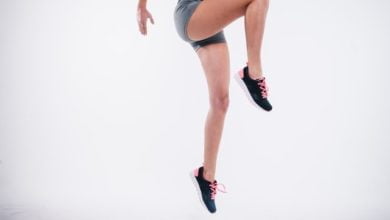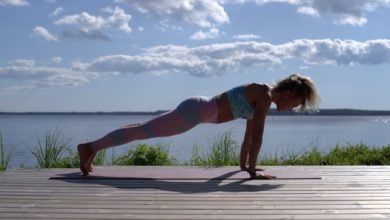Top 10 rules of snowboarding

Top 10 rules of snowboarding
Snowboarding is a winter sport that many enjoy, with both formal and informal rules that participants must observe. Even beginners should consider mountain etiquette and the “unwritten” traffic rule. Professional skaters have more rules to consider when competing, and this list will help explain the nuances that go with them.
What are the most important rules of snowboarding?
- Slalom / Giant Slalom Rules
- Halfpipe rules
- Snowboarding rules
- Big Air Bases
- Slopestyle rules
- Snowboarding regulations
- Equipment bases
- Penalty rules
- Disqualification Rules
- Olympic qualification rules
1. Giant zig zag rules
Giant parallel slalom has been a staple at the Winter Games since 1998, and the event consists of two skateboarders racing side by side on similar tracks as they attempt to maneuver through poles anchored in the ground, referred to as “gates.” “
The Olympic slalom event consists of four parts, starting with the qualifying round where the snowboarder may take two rounds. Then, the two times are combined, and the athletes with the highest cumulative 16 times advance to the elimination round head-on. The elimination race consists of only one run, and whoever crosses the finish line first advances to the next round. The remaining contestants then participate in another head-to-head elimination round in which the same format is applied, narrowing the pool down to four remaining contestants. Once the final four are determined, the final medal is held. In the medal final, the 1st and 2nd place competitors from the final elimination round compete head-to-head to determine the gold and silver medal places. The third and fourth skaters are racing for bronze and fourth place.
2. Halfpipe rules
The Halfpipe event features a U-shaped pitch built with snow, resembling a tube cut in half. The walls are between 18 and 22 feet high depending on the competition, and athletes ride back and forth, launching themselves into the air to perform taped tricks. A team of six judges sets each athlete’s score between 1-100, and to ensure accuracy, the highest and lowest scores are dropped. The remaining four scores are averaged together for one final score in each set. The score depends on five factors: amplitude, difficulty, variety, implementation, and progression. The Olympic competition consists of a qualification round and a final round of 12 athletes with the highest scores from the qualifiers.
3. Snowboarding Rules
The Ice Cross was added to the Olympic Games at the 2006 Winter Games in Turin. Also known as boardercross by fans, the event consists of 4-6 snowboarders racing simultaneously on a predetermined track filled with obstacles. The track, which is usually narrow and features obstacles such as hills, jumps and dips, tests high-level skills such as speed, balance and maneuverability. While the riders are not registered, rules exist to ensure fairness and safety. This includes intentionally prohibiting contact with other riders and deliberately preventing a competitor from tipping over by slowing down.
4. Large air bases
The International Olympic Committee has decided to include the Great Air Event in the 2018 Winter Olympics, a free-swimming event in which riders descend from a starting ramp and attempt three tricks. Snowboarders only get one attempt at this event. Athletes will gain speed on the slope and start once they gain enough momentum. The Winter Games in Pyeongchang featured a slope of 49 meters with a maximum slope angle of 40 degrees. Once in the air, the rider will continue to perform his three set tricks and will be judged by a panel on difficulty, execution, amplitude and landing to determine his score.
5. Slopestyle rules
Since the 2014 Winter Games in Sochi, snowboarding has grown into one of the most popular sports in figure skating. Slopestyle involves riders taking a trail that has obstacles like rails, jumps, and other park features. The contestant’s goal is to finish the course while performing a routine consisting of different tricks and grinds to score the most points out of 100. Points are scored and determined by originality, amplitude, difficulty, progression or flow, and trick execution. A team of six judges scores the contestants, and the highest and lowest scores are dropped to ensure accuracy.
6. Characteristics of the skateboard
Different boards and regulations are used depending on the type of competition, event or type of rider you are in. In freestyle events such as the half-pipe, incline and big air, the boards are often short, wide, and floppy to allow for trickery, increase balance, and enable the snowboarder to ride in any direction. The front and tail of the board are curved upwards to facilitate take-off and landing in both directions. For parallel giant slalom, the boards are generally longer than a standard skateboard, are usually solid and narrow, and have a square back with a low forefoot. Snowboard cross uses a combination of these two styles. Maintains an extended shape while also being rigid to help with stability. As a general rule, the taller or heavier the player, the taller the skateboard should be.
7. Equipment bases
The equipment used in figure skating depends on the event the skaters are participating in and individual preference. Equipment usually consists of ties, boots, helmets and goggles. Most snowboarders use soft shoes and elastic laces that allow a wide range of motion and provide foot and ankle support; Alpine snowboard boots also provide support but have a hard plastic exterior. Their bond locks the rider’s foot firmly in place. In cross-country skiing, the type of ties used depends on the shoe. A rider using soft shoes will use elastic ties, while a rider in hard shoes will use ties that secure them firmly to the board. All riders should wear a helmet, but that’s up to them; Protective eyewear is optional, not mandatory.
8. Penalty rules
Most events at the Winter Olympics have referees for registration, and part of their duty stations to ensure that penalties do not occur during competition. These penalties can vary depending on the event, but they all negatively affect the outcome of the athlete in question. For example, in a slalom and giant slalom, a rider might receive a penalty for calling the gate while running. In other events such as the big air and downhill style, the opponent can receive penalties for improper landing of his tricks and falling after touching the ground after landing. These penalties are taken into account in the player’s score after their respective runs and will retroactively remove points from the final score. The exact number of points removed is at the judge’s discretion.
9. Disqualification Rules
Figure skaters may be disqualified from competitions for various actions depending on the type of event. In Halfpipe events, a pause of more than 10 seconds in the middle is an automatic invalidation, and the passenger must stop immediately. In a giant parallel slalom, you can be disqualified for such actions as a false start, disturbing an opponent while running, passing through the wrong gate, failing to perform a turn on the outside of the gate, and not ending the run with at least one foot fixed on the board. Show skating is a little more relaxing, but any intentional contact with the “race leader” or other riders in a way that intentionally prevents an opponent trying to pass can result in disqualification after the race.
10. Olympic Qualification Rules
Some consider the Winter Olympics to be the pinnacle of figure skating competitions. FIS holds competitions such as the World Championships and the World Cup between Olympic years. The ranking in these tournaments determines the number of spots each country can allocate to its riders in the Olympic Games, called the “quota”. Most teams have specific requirements or criteria that must be met to qualify for Olympic competition. Team USA identifies and selects its members through objective criteria, specifically through FIS rankings, international competitions, and placement in US competitions such as the Aspen Grand Prix and Visa Big Air events.
Instructions
Snowboarding is a mountain sport similar to skiing, but with one large board attached to the rider’s foot instead of two narrow skis. Snowboarders carve down the mountain in an “S” manner, their movements focusing more on toe-and-heel turns that carve horizontally across the hill and focus on graceful controlled turns. Snowboarding was initially developed in the United States between 1960-1970 and became a Winter Olympic sport in 1998.
What are the etiquette for snowboarding?
Passing snowboard etiquette is a set of unwritten rules regarding how other skiers can pass the mountain in a respectful and safe manner. On the mountain, no matter skiing or snowboarding, the rule of thumb for passing is always that the person below has the right of way. The person below usually can’t see the other skaters approaching behind them when they try to pass, so it’s your responsibility to make sure you don’t run into the person in front of you if you want to overtake them. Make sure you take a wide approach when passing and give everyone you pass plenty of space to ensure that no one is injured in a potential crash.
What are the different types of figure skating disciplines?
When it comes to different disciplines, figure skating is not lacking; The Olympics recognize six separate disciplines of figure skating. The first two disciplines recognized were the men’s and women’s giant slalom and half-pipe competitions at the Nagano Games in 1998, and the ice cross was added to the 2006 Winter Games in Turin. Following the continued rise in popularity and success of figure skating at the Olympics, the downhill, parallel slalom, and major air events were added to the 2010, 2014 and 2018 Winter Games, respectively.



